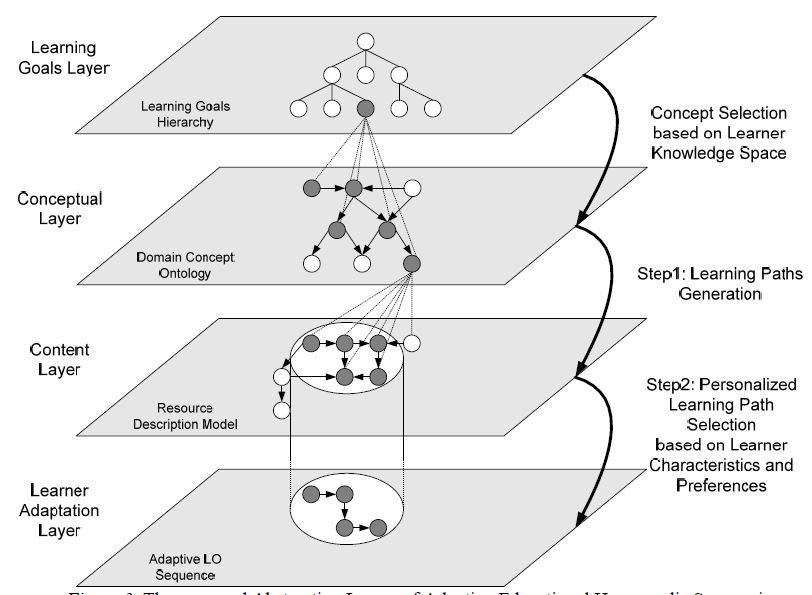Learning Paths Graph
Learning Paths Graph — граф планов обучения
Learning Paths Graph (LPG) is a directed acyclic graph that defines all possible learning paths that match a given learning objective.
Learning Paths Graph is a directed graph which represents all possible learning paths (sequence of learning resources) that matches the learning goal in hand.
To construct the LPG, for each concept of the Concepts Path Graph (CPF) related learning resources are selected from the Media Space based on the connection between the Domain Concept Ontology and the Resource Description Model. Media Space describes the educational characteristics of the learning resources. Each node in the CPF is then replaced by the related set of learning resources retrieved from the Media Space. The structure of the learning resources set is directly inherited by the structure of the Media Space.
The final graph is the Learning Paths Graph. Assuming that the Media Space does not contain circular references between learning resources, the LPG is again a simple acyclic directed graph. Although this assumption does not directly affect either the design of an Adaptive Educational Hypermedia Systems (AEHS), nor our sequencing methodology, it is necessary for avoiding infinite learning paths.
At this step a personalized learning path is selected from the graph that contains all the available learning paths based on learner’s attributes in the User Model. As a result, an additional layer in the abstract sequencing layers of adaptive educational hypermedia systems, namely the Learner Adaptation Layer, which is used for selecting the personalized learning path.
References
- Karampiperis P., Sampson D. Adaptive learning resources sequencing in educational hypermedia systems. — Educational Technology & Society, 8, 4 (2005), 128–147.
- Grubišić A., Stankov S., Žitko B. Adaptive Courseware: A Literature Review. — Journal of Universal Computer Science, vol. 21, no. 9 (2015), 1168-1209.
